In the 1930s, men's scarves evolved into essential fashion staples, moving from military practicality to stylish expression. Made from luxurious fabrics like silk and rayon, these accessories signified sophistication and individuality. Bold Art Deco designs and vibrant colors dominated the scene, offering patterns that ranged from classic paisley to geometric shapes. Iconic figures like Cary Grant elevated scarves, pairing them effortlessly with both formal and casual attire. The introduction of monogramming added a personal touch, emphasizing exclusivity. This evolution tells a fascinating story of style that shapes modern fashion conventions, inviting you to explore the deeper layers of this trend.
Evolution of Men's Scarves
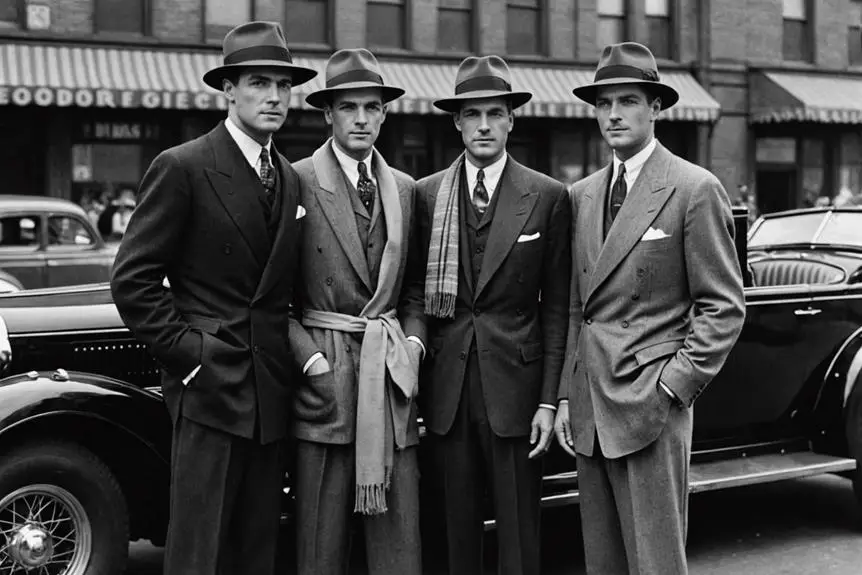
The evolution of men's scarves in the 1930s represents a fascinating blend of practicality and fashion, transforming from military insignia into stylish accessories integral to a man's wardrobe. Initially, the cravat, a neck scarf adopted from Croatian soldiers, paved the way for this transformation, becoming a French fashion staple in the 17th century. By the 1930s, scarves had shed their purely functional roots, emerging as essential fashion items that conveyed personal style and social status.
During this decade, luxurious materials like silk and rayon dominated the scarf market, appealing to the fashion-conscious man. You'd find intricate patterns and designs that not only enhanced an outfit but also showcased the wearer's taste. The rise of the 'steinkirk' style influenced the design of modern neckties, promoting simpler scarf styles that were easier to wear.
Scarves became widely accepted as accessories for both casual and formal attire, seamlessly pairing with suits and overcoats. This evolution highlights how men's scarves progressed from mere utility to celebrated fashion statements, enriching your wardrobe with versatility and elegance throughout the 1930s.
Materials and Craftsmanship
Scarves in the 1930s were crafted from a variety of luxurious materials that combined comfort with elegance, reflecting the era's fashion sensibilities. Silk, wool, and rayon dominated the landscape, offering distinct textures and styles. The use of lightweight fabrics, such as cotton and linen, became essential for summer scarves, providing versatility for warmer months. Vintage clothing labels often reveal the craftsmanship and brand history behind these accessories, showcasing their significance in men's fashion during this period vintage clothing encompasses items.
Art Deco motifs influenced the intricate designs of these scarves, showcasing the craftsmanship of skilled artisans. Handwoven techniques were particularly valued, resulting in unique pieces that featured varying textures and styles. The addition of fringe details not only enhanced aesthetic appeal but also highlighted the meticulous attention to detail that characterized the period's craftsmanship.
Monogramming emerged as a popular trend, allowing men to personalize their scarves, adding a touch of sophistication to this fashionable accessory. This personalization reflected a growing emphasis on individuality in men's fashion during the decade. Overall, the combination of luxurious materials, expert craftsmanship, and stylish details made men's scarves in the 1930s not just a functional item but a significant fashion statement, embodying the elegance and flair of the time.
Popular Styles and Patterns
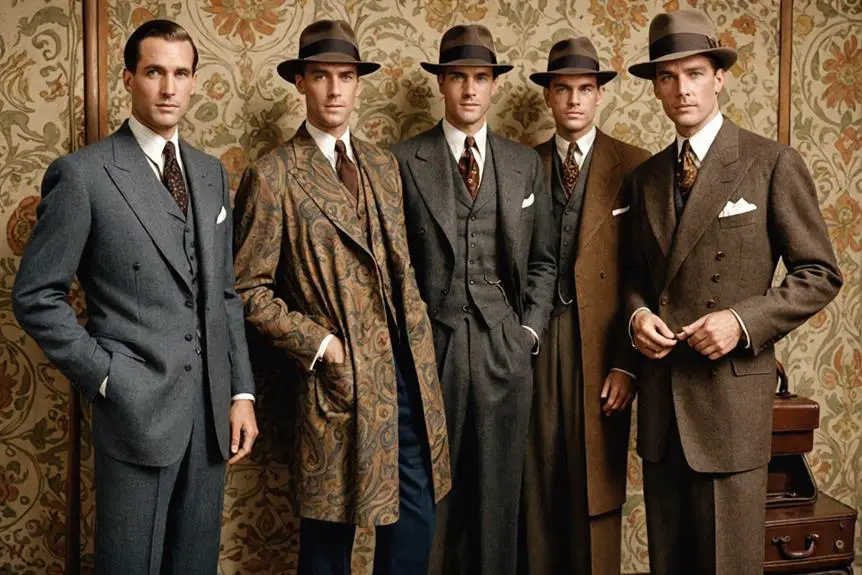
Throughout the 1930s, men embraced scarves as essential accessories that not only complemented their outfits but also made bold fashion statements. The era was marked by a variety of styles and patterns that showcased the sophistication and individuality of men's fashion. Scarves crafted from silk and wool became increasingly popular, often featuring vibrant colors and intricate designs.
Here's a look at some of the most popular styles and patterns of the time:
| Style/Pattern | Description |
|---|---|
| Art Deco | Bold geometric shapes and lines |
| Paisley | Classic teardrop motifs in vivid colors |
| Geometric Pattern | Repeated shapes creating visual interest |
| Vintage Prints | Nostalgic designs evoking earlier styles |
| Fringed Edges | Decorative fringes adding flair |
Men often wore these scarves as mufflers, merging functionality with style. Personalized touches like monogramming allowed men to express their uniqueness, making their choices distinctly their own. This combination of practicality and flair illustrated how scarves became a crucial part of men's wardrobes, reflecting broader design trends and the evolving notion of masculinity during the 1930s.
Scarves as Fashion Statements
In the 1930s, men's scarves emerged as bold fashion statements that transcended their functional origins, signifying sophistication and individuality. Scarves became essential men's accessories, crafted from luxurious materials like silk and wool. Their intricate patterns often reflected the Art Deco aesthetic, showcasing geometric designs and vibrant colors that captured the eye.
This era saw scarves paired with formal attire, enhancing the overall look and serving as a canvas for personal expression. You could easily distinguish your style through the choice of patterns and colors, allowing scarves to communicate your personality without saying a word. The introduction of the simpler steinkirk style, a tied scarf, further influenced neckwear trends, making it easier for men to adopt this fashionable accessory.
Monogramming and personalized scarves gained popularity, enabling you to display your individuality while adhering to contemporary style norms. A monogrammed scarf not only added a touch of flair but also signified a sense of exclusivity. In this way, scarves in the 1930s became more than just neckwear; they transformed into potent fashion statements that encapsulated the spirit of the time.
Iconic Figures Influencing Trends
The influence of iconic figures in the 1930s considerably shaped men's scarf trends, turning them into must-have accessories that defined personal style. Actors like Cary Grant and Clark Gable showcased scarves in their films, setting a standard for elegance and sophistication. As you observe their on-screen personas, you can't help but notice how each silk scarf and cravat enhances their ensemble, embodying the refined aesthetics of 1930s fashion.
The cravat, a stylish precursor to modern neckties, became a symbol of high society. It wasn't only about looking good; it reflected a man's status and sophistication. Furthermore, military influences seeped into civilian wear, as scarves worn by soldiers shifted into fashionable men's accessories. This connection added a layer of masculinity to the accessory, making it even more appealing.
In this vibrant decade, scarves emerged in various styles, from intricate patterns to bold, vibrant colors, allowing men to express their individuality. Whether paired with a tailored suit or casual attire, these scarves captured the essence of 1930s fashion, illustrating how influential figures like Grant and Gable transformed men's accessories into essential components of a well-rounded wardrobe.
Frequently Asked Questions
When Did Men Start Wearing Scarves?
Men started wearing scarves as early as the 3rd century B.C.E., evolving through various historical periods. These garments shifted from military insignia to fashion statements, reflecting social status and personal style throughout different eras.
What Accessories Did Men Wear in the 1930s?
In the 1930s, you'd likely wear cufflinks, tie clips, and leather gloves, each adding flair to your outfit. These accessories reflected personal style while emphasizing sophistication, blending functionality with the era's fashion trends.
Did Men Wear Scarves in the 1920s?
Yes, men did wear scarves in the 1920s. They complemented suits and overcoats, reflecting personal style. With materials like silk and rayon, scarves transformed into fashionable accessories, showcasing both elegance and individuality among men.
What Is a Scarf Around a Man's Neck Called?
A scarf around a man's neck can be called a necktie when styled formally, or simply a scarf or muffler for casual wear. These terms reflect both the function and fashion of men's neckwear today.
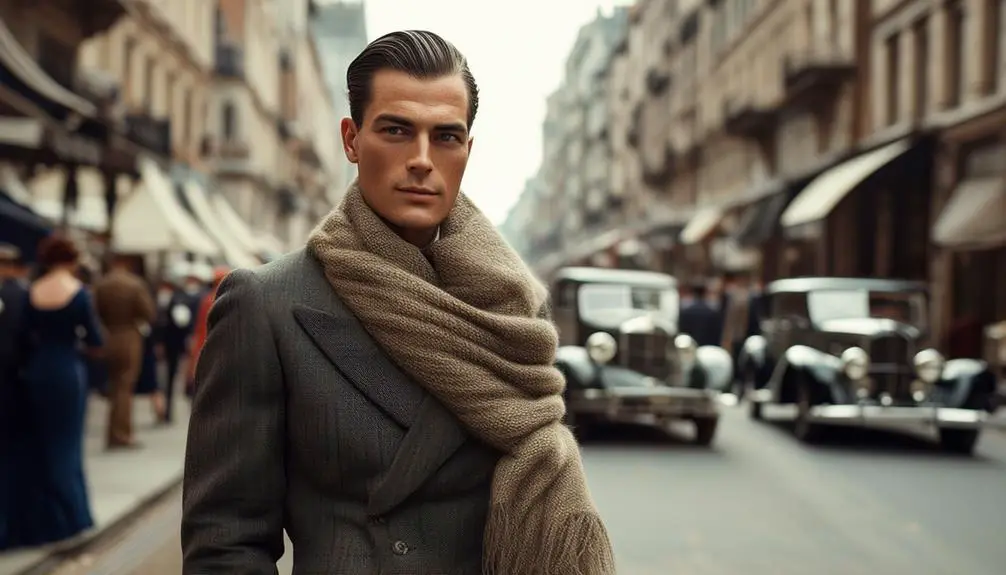

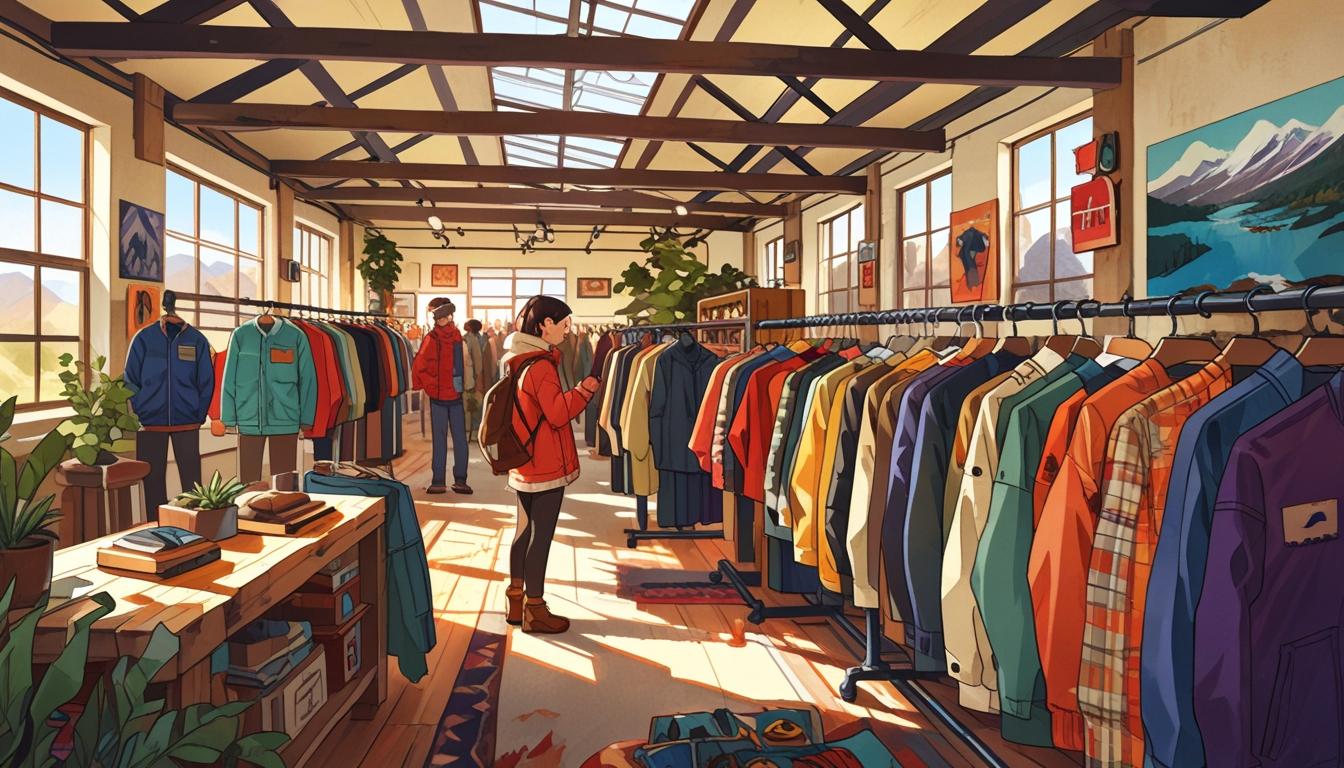
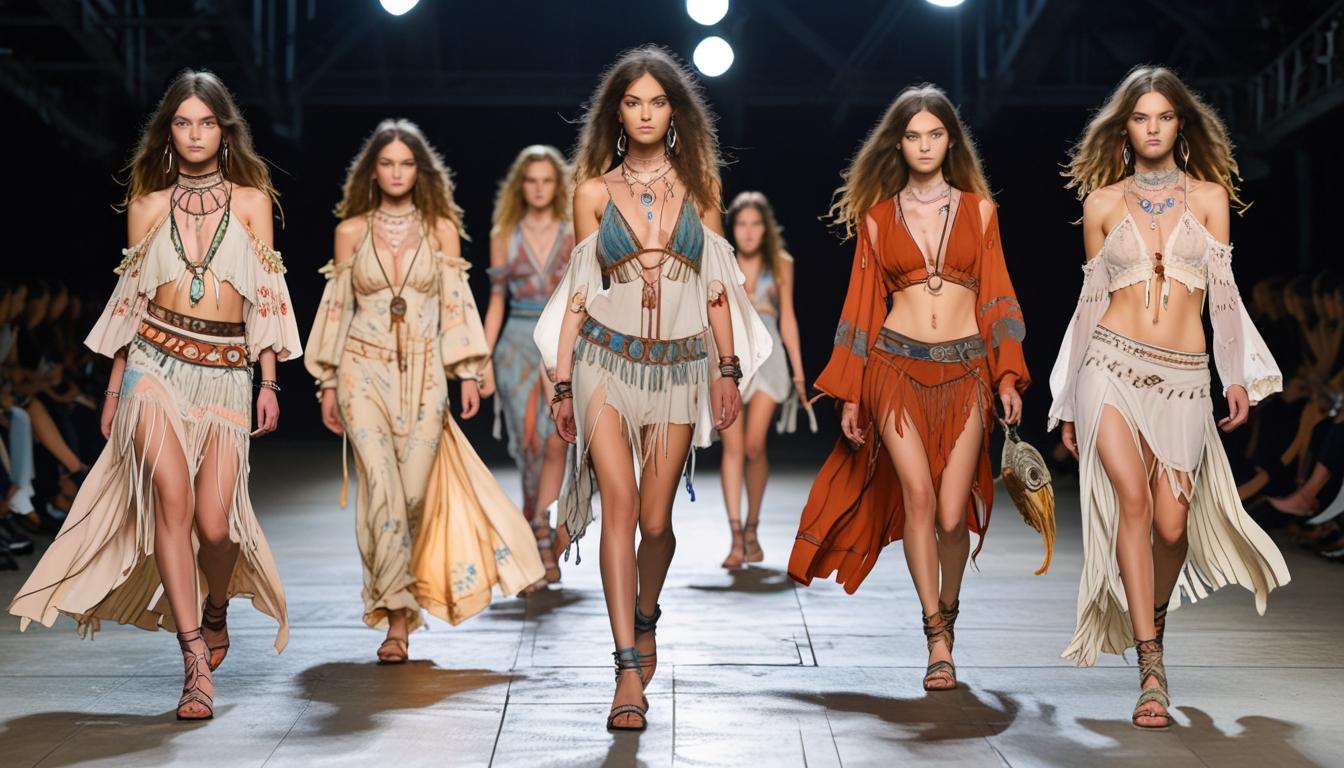
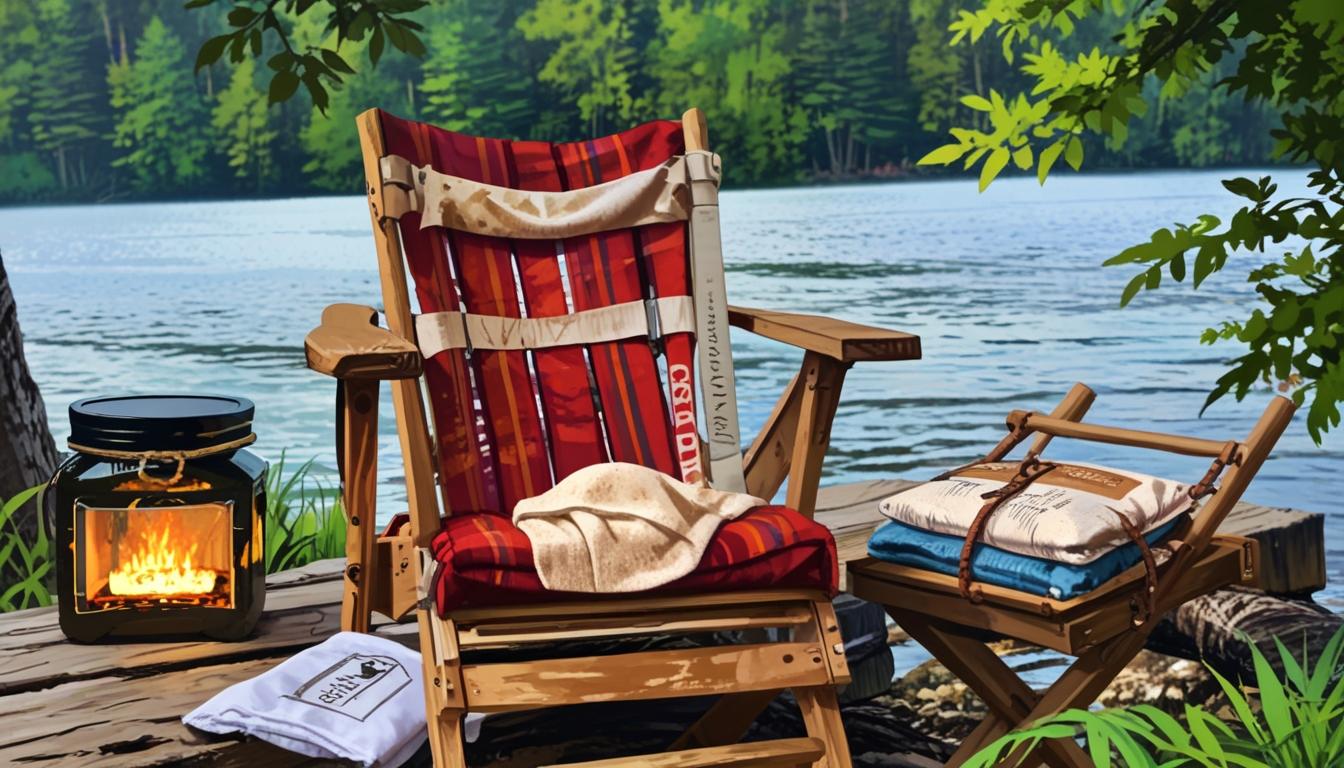
Can you be more specific about the content of your article? After reading it, I still have some doubts. Hope you can help me.